Boot: 2020-2021 Head Raptor 110S RS W
Stated Flex Rating: 110
Available Sizes: 22-27.5
Stated Last: 92 (size 24.5); 94 mm (size 25.5); 96 mm (size 26.5)
Size Tested: 23.5
Stated BSL (size 23.5): 273 mm
Blister’s Measured Weight (per boot for size 23.5):
- Shells & Boot Boards, no liners: 1482 & 1483
- Liners (no spoilers, no footbeds): 384 &382
- Total Weight per Boot: 1866 & 1865
Liner: Women’s HeatFit Pro liner
Buckles: 4 micro-adjustable alloy buckles
Power Strap: 40 mm Velcro
Shell Material:
- Cuff: Polyurethane
- Shoe / Clog: Polyurethane
Soles: Standard Alpine (ISO 5355)
Binding Compatibility: Standard Alpine, Grip Walk, WTR, and MNC Bindings
MSRP: $700
Test Locations: Taos Ski Valley, NM; Telluride & Copper Mountain, CO; Sun Valley, ID
Days Tested: 17
[Note: Our review was conducted on the 17/18 version of the Raptor 1110 RS W, which returns unchanged for 18/19, 19/20, and 20/21, apart from graphics.]
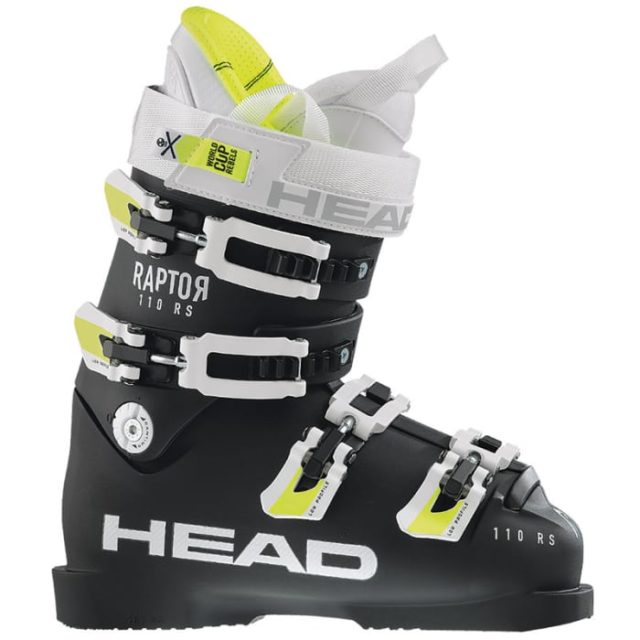
Intro
Head says their Raptor 110S RS W is “Designed for aspiring race rebels but with superlative comfort.” As someone who appreciates a stiffer boot and a precise fit, I was eager to see how the Raptor 110S RS W compared to other high-performance women’s boots like the Tecnica Mach1 Pro W LV and Nordica GPX 105 W.
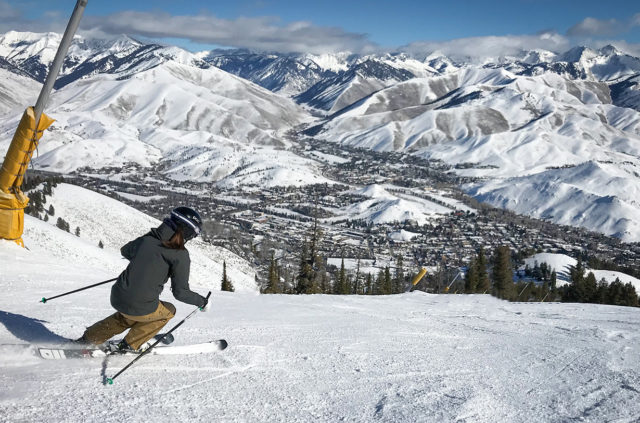
I was particularly interested since reviewers Jonathan Ellsworth and Paul Forward are very big fans of the men’s Head Raptor 140 RS. So how does the Raptor 110S RS W compare to the competition, and what types of skiers would like it most?
Buckles, Power Strap, Etc.
While the Head website shows the Raptor 110S RS W with their micro-adjustable Spine-Tech alloy buckles, the boots I tested did not include the Spine-Tech buckles. After a conversation with a knowledgeable Head rep, I learned that the Spine-Tech buckles are not available in the US market for the Head Raptor 110S RS W. Regardless, the traditional buckles on the boot I tested were easy to use and I was able to easily adjust them with mittened hands.
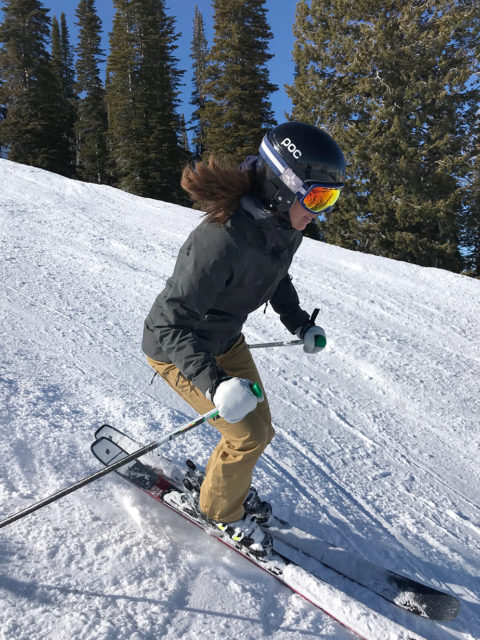
The Raptor 110S RS W features a 40 mm velcro strap that has a little give to it. I think these boots would benefit from a Booster strap, as a slightly stiffer power strap might bring the flex of the boot closer to that of the Mach1. The men’s Raptor 140 RS includes a power strap designed by Booster and Paul Forward raved that it was one of the best aspects of the boot, so it’d be nice to see a similar strap used on the women’s boot. I have found that a good power strap can help increase the rigidity of a boot’s flex, so if you find yourself wanting a slightly stiffer flex than the Raptor 110S RS W provides, it’d be worth adding a Booster strap.
Liner
The HeatFit Pro liner in the Raptor 110S RS W doesn’t feel quite as warm as that in the Mach1, as the Raptor 110S RS W’s liner lacks any sort of soft, plush material around the cuff. The exterior of the Raptor 110S RS W’s liner features plastic at the top of the cuff and on the tongue, which is meant to increase power transfer and add some rigidity to the liner. There is also velcro on the back of the liner to secure it to the shell. The Raptor 110S RS W’s liner is also fully heat moldable and once heated, it provided a more precise and slightly more comfortable fit.
Fit
As with any boot review, we highly recommend working with your local bootfitter to ensure the best possible fit for your feet. I have a fairly low-volume foot that measures just shy of a size 24.5 when sitting and right at 24.5 when standing. My custom insoles have helped correct this slight arch collapse and thanks to the help of my local bootfitter (and fellow reviewer), Kara Williard, I have been able to successfully downsize to a 23.5 in alpine boots most of the time. Being able to downsize has the advantage of giving me a tighter fit, which can help eliminate any sort of delay in power transmission between my foot to the ski as I initiate a turn.
Of the alpine boots I’ve tested (Tecnica Mach1 Pro W LV and Nordica GPX 105 W), the Raptor 110S RS W has the shortest boot sole length (aka, BSL), the narrowest last, and the tightest all-round fit.
In a size 23.5, the BSL for the Raptor 110S RS W is 273 mm while the Mach1’s BSL is a 280 mm and the GPX’s is 275 mm. And while the Mach1 and GPX in a size 23.5 are great fits for me in terms of length, the size 23.5 Raptor felt too short and, even with the help of Kara, has resulted in a purple toenail or two.
In his review of the men’s Head Raptor 140 RS, Paul Forward noted the same shorter fit. While Head states that they designed the boot with an anatomical toe box, the toe box of the Raptor 110S RS W seems stubbier and more square than the other boots I’ve tested.
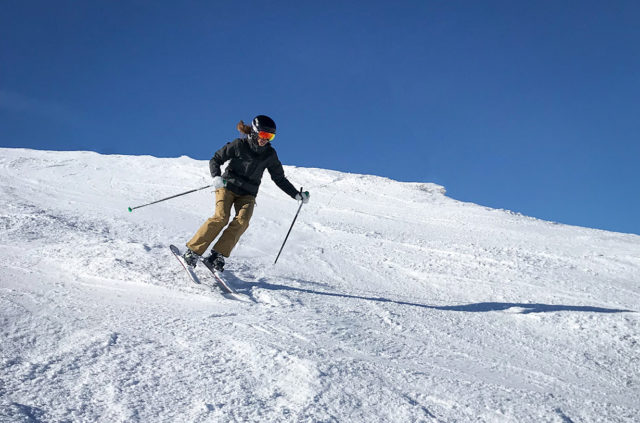
Kara was able to grind out a bit of the shell to give me some relief, and my other favorite bootfitter, Doug Yeates (PK Ski Shop in Ketchum, Idaho), was able to punch out the big toes in both boots. Even with these adjustments, I still haven’t found the boot comfortable enough for long days of skiing. In the future, my go-to size for the Raptor 110S RS W will be a 24.5. This is why it’s always good to purchase your boots from a local shop where they can help you find the perfect fit.
The Raptor 110S RS W is definitely narrower than the other boots I’ve tested. The size 24.5 Raptor 110S RS W has a stated last of 92 mm, whereas the Tecnica Mach1 LV Pro W has a 98 mm last. But as previously mentioned, thanks to the Raptor’s thick plastic shell, your local bootfitter can help customize the fit through punching and grinding — to an extent. Because of how much work an experienced bootfitter can do on the thick-shelled Raptor 110S RS W, you might want to give it a try if you’re between sizes in most boots.
The biggest issue I had with the Mach1 was its odd fit around the inside of the ankles, which led to excessive rubbing and a bit of a bone spur. The Raptor 110S RS W, on the other hand, is snug around my ankles and I never experienced any rubbing like that in the Mach1. Additionally, the fit of the Raptor 110S RS W secured my heel nicely, eliminating any movement in that area.
Flex Pattern and Comparisons
Overall, the Raptor 110S RS W performs very well while skiing. While the Tecnica Mach1 has a slightly stiffer flex, the Raptor 110S RS W has a smoother flex. At no point did the Raptor 110S RS W collapse on me like the Mach1, and I never experienced shin bang in the Raptor 110S RS W thanks to a superb fit along the entirety of my shin. The entire length of my shin made contact with the tongue of the boot, which in turn allowed for a smooth flex and no hot spots.
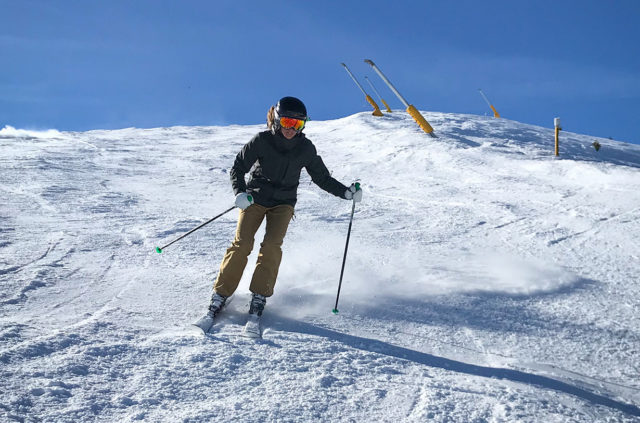
The lateral stiffness and rearward support of the Raptor 110S RS W were both on par with the Tecnica Mach1 and Nordica GPX. I have a tendency to get in the backseat, but in the Raptor 110S RS W, I was able to easily adjust myself forward thanks to the rearward support of the boot.
With a tight fit and narrow last, the Raptor 110S RS W is extremely responsive from the initiation of a turn. And thanks to its smooth flex pattern, it was easy to quickly move in and out of turns with ease. Additionally, the Raptor 110 has a more forward stance than the Mach1 Pro W LV, which helped me maintain a more forward, aggressive position.
Although flex ratings are pretty arbitrary, the flex of the Raptor 110S RS W is slightly softer than the Mach1 and a little stiffer than the GPX. Of the three boots, the Mach1 has the tallest cuff height and the strongest flex, while the Raptor and GPX are of a similar, shorter height and have slightly softer flex patterns. Even though the Raptor 110S RS W has a softer flex than the Mach1 Pro W LV, I still found the Raptor 110S RS W’s flex pattern to be adequate for my style of skiing. And while I’d prefer a slightly stiffer boot, the boot still performed well overall.
Lastly, it’s worth noting that the Raptor 110S RS W can be turned into a “100” flex boot by adjusting the rivet on the spine of the boot. I used the boot in the “110” flex setting, but if you’re not sure you need that stiff of a boot, you can soften up the Raptor 110S RS W.
Durability
While I’ve only spent 17 days in the Raptor 110S RS W, those days included plenty of hikes on rocky terrain and lots of walking on concrete. The shell of the boot is showing very little wear and the stock liner has not packed out during that time. The boot does not have removable heel / toe lugs and it’s possible for the lugs to wear down with excessive use. But with help from a bootfitter, it’s possible to install removable heel and toe pieces. Head makes lifter plates built for the Raptor series that can be installed, but it requires a specialty shop that can router the boot and cut the toe and heel lugs.
Bottom Line
The Head Raptor 110S RS W is an excellent option for strong female skiers who are looking for a stiff, low-volume, high-performance alpine boot. Lighter or less aggressive skiers would be better off in a softer boot, and if you need maximum stiffness, the Tecnica Mach1 Pro W LV or Nordica Promachine 115 W might be better options. But for many agressive female skiers, the Raptor 110S RS W is worth a good look.
